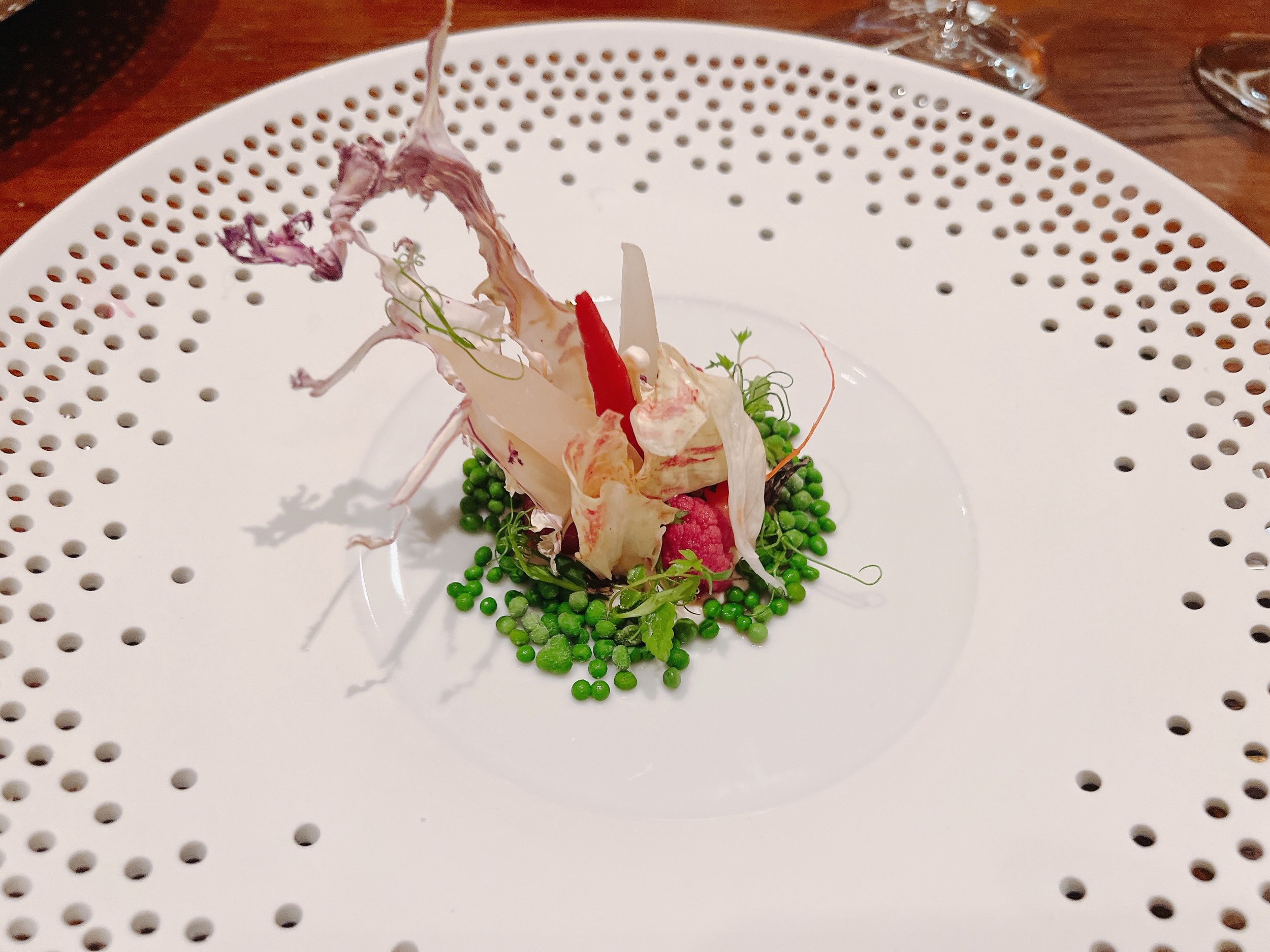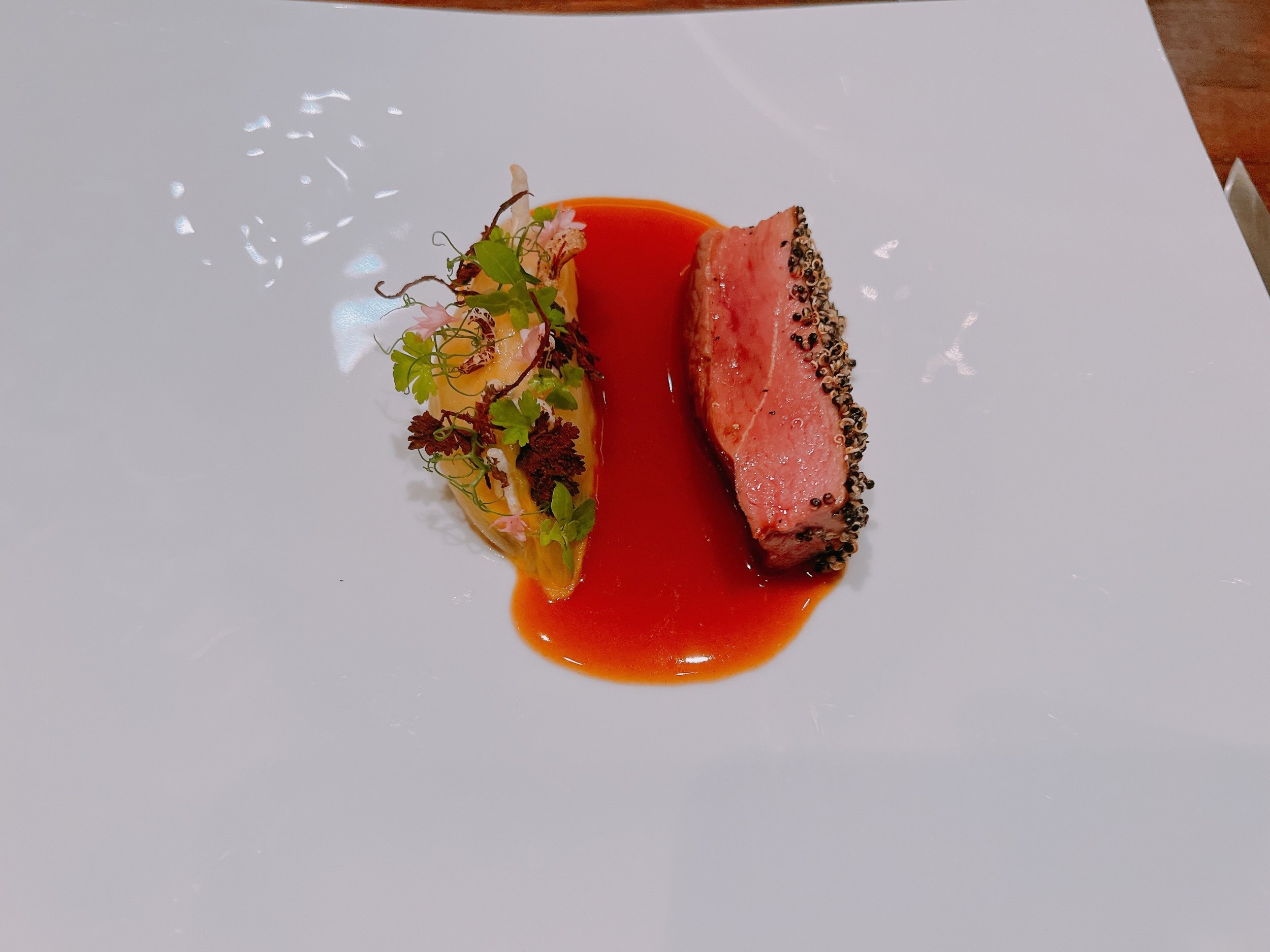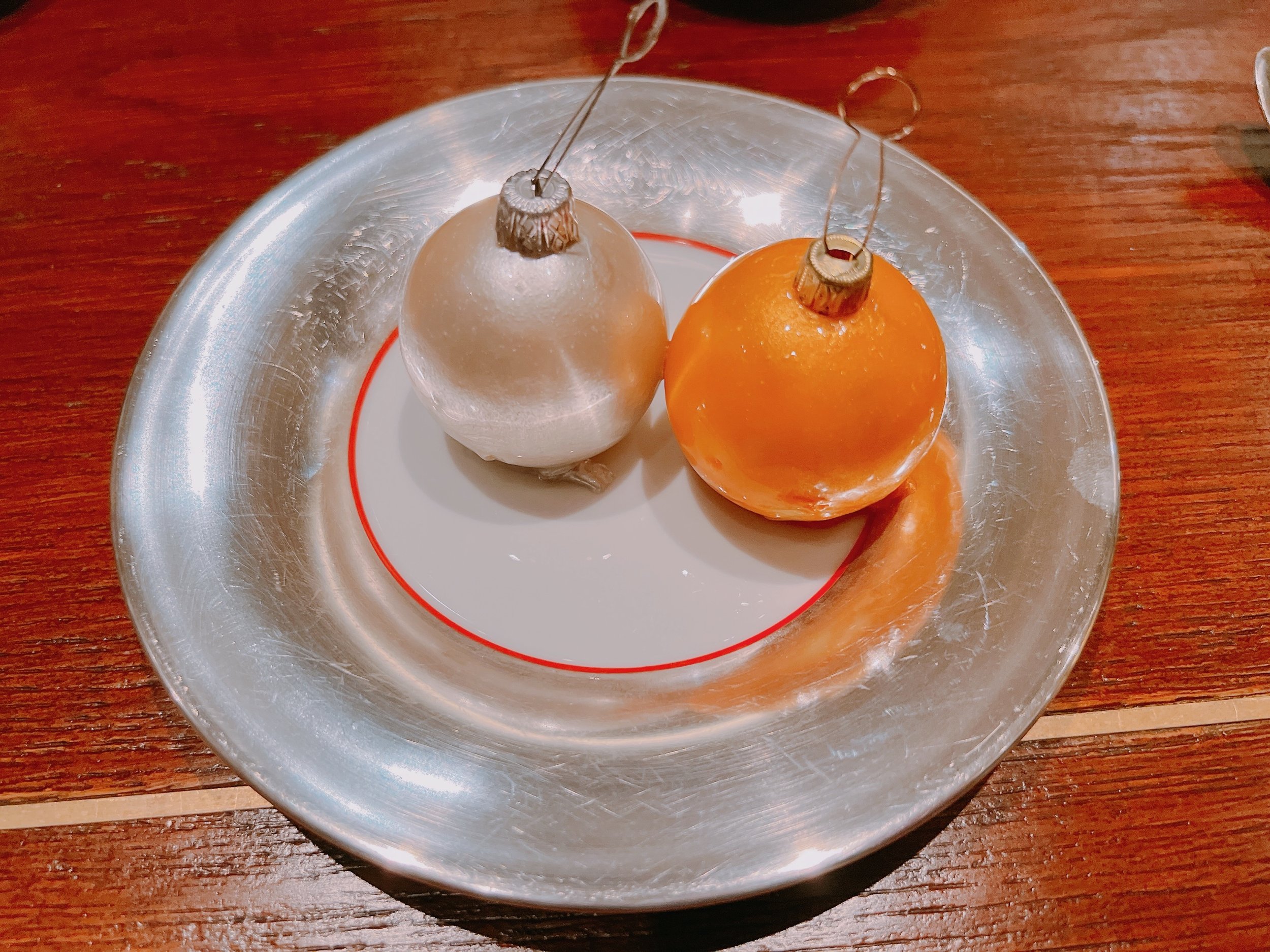Restaurant Überfahrt - Rottach-Egern
Rating: 18/20
Where: Rottach-Egern, Germany
When: Dinner for 2 on 30 November 2022
Cost per Person: Tasting menu 309-415 Euro, Wine Pairing 196 Euro
Accolades: 3 Michelin Stars (2014-2023)
Why: Delicious reinterpretations of German food classics; located in a swanky hotel
Note: Restaurant Überfahrt closed abruptly in May 2023 after allegations against the chef were published in the German news magazine “Der Spiegel”.
Restaurant Überfahrt is located in a 5-star hotel right on the shores of a lake, the Tegernsee, about an hour's drive south of Munich. The luxurious hotel is a perfect fit for one of the most expensive areas to live in Germany. Not that we made much use of it - this was the first stop of a trip that was like the culinary version of the Amazing Race: better food, fewer roadblocks, but a similar amount of traveling. In fact, after a direct flight from San Francisco to Munich and a 90 minute rental car ride, we arrived at the pitstop restaurant a mere 10 minutes before our reservation time. While leaving the next morning at 6am meant that we only saw darkness outside, there was a three-star Michelin restaurant to (hopefully) justify the ordeal.
Of the several restaurants at the hotel, Überfahrt is probably the smallest, with only seven tables or so. On our visit it was decorated with festive Christmas ornaments dangling from the ceiling (see above).
Food-wise, the restaurant offered a single tasting menu with either five or seven courses. For some of these courses there were two dishes to choose from. We went for the full seven course experience, trying almost all of the dish options. A wine pairing was also available for around 200 Euro. The poured wines were generally pretty good, but sometimes only went so-so with the supposedly matching food.
Three amuse bouches preceded the “official” tasting menu. A small wafer sandwich was a savory play on a “Hanuta” - a German candy that looks similar but is filled with chocolate and chopped hazelnuts. Here, tofu, herbed cream, nuts and raisins made for a salty, slightly acidic, but very interesting and unusual alternative to Hanutas. Probably healthier, too 18.
Small crackers that looked like hollowed out logs were filled with a different kind of herbal cream, and with nuts and mushrooms. Very crunchy, the green sauce refreshing, but unfortunately overall a bit under-seasoned and/or under-salted 16.
A red cauliflower lollipop had a very thin wax shell on the outside and was filled with fruity cauliflower puree. A refreshingly unusual presentation 17.
Two kinds of bread arrived next, both served warm. A potato bread had a lovely, not too hard crunch and an almost creamy interior. Excellent 19. A “Laugenkastanie” was essentially a pretzel roll, great for what it was 17.
That launched us into the tasting menu proper. First up, a small pumpkin soup was served in a hollowed out pumpkin. I was happily surprised that the soup was completely savory, with none of the sweetness often associated with pumpkins. It seemed like the soup contained coconut milk, giving it a vaguely Asian touch. It also included a citrus fruit that had been prepared in a way that kept the citrus' texture, but none of its acidity - interesting. Onions and what felt like a fancy version of Maggi sauce completed the dish. Overall very good, among the best pumpkin soups I've ever had 18.
For the next course there was a choice between a foie gras dish and a “walk in the vegetable garden”. We all went for the latter, a kind of salad made from marinated vegetables, herbs and sour cream. Pea puree was frozen into little balls that looked very much like tiny peas (or green dippin' dots); they were lovely, with a strong pea flavor. Equally good was the sour cream, it felt like it had a hint of mustard. Cauliflowers, radishes and carrots were all pickled in different ways. Red cabbage had been sliced and dried into dramatic shapes. Some small crackers and enoki mushrooms added even more texture. Especially given the seasonal limitations that any “from the garden” dish has in late November, this was actually very good and quite enjoyable 18.
Next I was served a “ham and bean soup”. The traditional, simple German dish was completely reinvented here. A clear beef broth was populated with several kinds of beans, topped with cassoulet and a generous helping of caviar. The different bean types had a variety of textures and flavors, the excellent caviar and cassoulet made the dish almost creamy, and the soup felt Asian in its lightness. All components of this dish were delicious, and so different that it felt like eating multiple related dishes in one. My favorite course of the evening 20.
The pescatarian replacement of the bean soup was cauliflower prepared two ways: dried and cooked. It came with breadcrumbs roasted in brown butter and an herb jus. A tiny bit sweet, but overall a flavorful and meaty dish - very tasty as well 19.
Gambas (shrimp), a Brittany sole and mussels were served with a nut butter espuma. The slightly spicy sauce was excellent (20 if rated individually) and it went fantastically with the shrimp, creating a dish reminiscent of Spain. The sole and the mussels were a bit weaker, lacking in flavor and thus being overpowered by the sauce 19.
For some unobvious reason, there was a pescatarian replacement of the gambas dish. Called “Turbot 2022”, it was the chef's latest preparation of this fish. Turbot was served topped with yellow arctic char roe, next to savoy cabbage and a beurre blanc sauce. The roe was a lovely counterpoint to the turbot, but the beurre blanc felt a bit too light to me 18. To be fair, I tried this dish right after the much stronger flavored gambas dish, so it might have scored higher eaten by itself.
Next, a truffle course. There were two options to choose from, and we tried both. Black truffles were shaved over a liquid egg yolk, spinach, herbs and a truffle sauce. This was a pretty heavy dish, but strongly truffle-flavored all throughout, very tasty 18.
The other truffle dish featured white Alba truffles, and came with a corresponding surcharge. Besides the shaved truffles, it contained veal, tapioca pearls and a speck espuma. On the positive side, it was undoubtedly a delicious dish. However, the dominant taste here was the speck sauce - any fan of bacon would love this dish. Unfortunately, the veal was AWOL and, more concerningly, I could barely taste the truffles. Given that these truffles ostensibly were the raison d'etre of this dish, the higher price didn’t seem worth it 17. The paired white Burgundy was a very lovely wine, though, and made up for some of the disappointment.
The main savory course was duck, served with a Belgian endive and jus. Said duck was lean (with virtually no fat) but quite chewy. The endive was pretty sweet, and slightly mustardy. Not terrible, but a more tender duck would have improved the dish 17.
The pescatarian “duck” was a cake made of kale, served with savoy cabbage and black garlic. A very good dish, with an excellent sauce and lots of flavor: acidic, savory, yummy 18.
There was no traditional cheese course, instead we were served a cheese fondue with some marinated eggplant and a “pomme souffle”. The potato didn't taste of much, and seemed to be there for texture only. Overall, the dish was pretty heavy - it's a fondue, duh -, but the eggplant added some welcome acidity, which made the overall result pretty good 18.
There were two dessert options, and we chose both of them. A warm orange cake contained pieces of oranges, dehydrated orange slices, gold-covered pistachios and a pistachio mousse. Next to it was a passionfruit caramel ice cream. That ice cream was very good, but I found the cake a bit too heavy, and the pistachio mousse too marzipany. A wintry dessert for sure 16.
Crispy fall leaves were the theme of the other dessert. Very pretty to look at, it also contained lime cream, chocolate and blackberries. The balance between chocolate, cream and blackberries seemed a bit off, with too much chocolate; altogether this also was on the heavier side of desserts 16.
Petit fours concluded the meal. These were mostly based on German Christmas confections. Two spheres that looked like Christmas tree ornaments came first. One was filled with a gingerbread mousse and berry jam. It could have used more spice, and felt overly creamy 15. The other sphere was filled with “stollen”, and ended up having a consistency like oatmeal, with raisins, nuts and some rum 15.
Sadly, no pictures for the rest (I blame the jetlag): a Florentine cookie was nice and sticky 15, a “rum bomb” fine, but more chocolaty than rummy 15, a coconut snow man was cute, but not too exciting taste-wise 14, a vanilla “kipferl” (a shortbread cookie) felt like it needed more sugar and was quite fatty compared to how it's usually made 14. A chocolate/peanut cookie that was a play on Snickers was chewy and lovely 17. Finally, a lemon tart had an odd taste for me 13 (my wife would have voted 15, so maybe it was just me).
Overall: A nice dinner with some excellent dishes. Most were inspired by traditional German dishes, but varied them in creative ways, completely reimagining the dishes rather than just “amping them up” (the bean soup being a good example). There were some hints of Spanish or Asian cooking, but they were so subtle that I might have imagined them. For the most part, this was traditional French technique applied to German dishes. The low point of the meal were the desserts, which could have used a lighter touch - they were far too heavy, especially coming at the end of such a long meal 18.




















